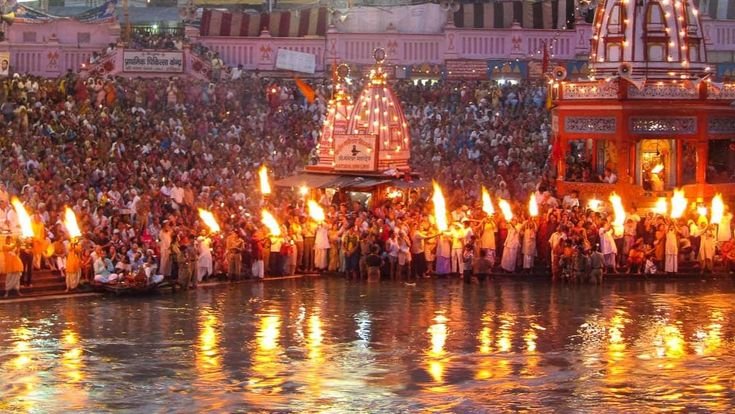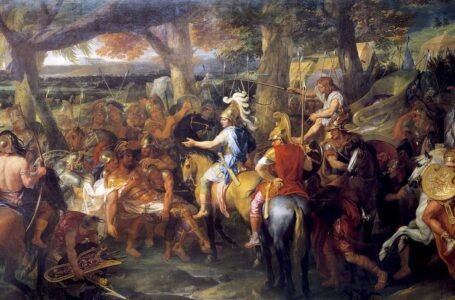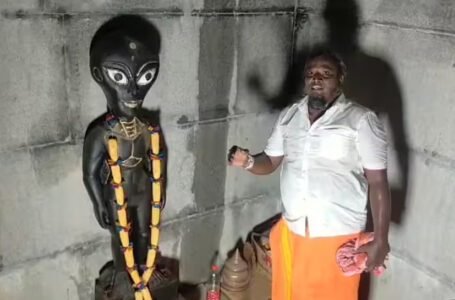Rituals by the River: Sacred Waters in Indian Culture

-Mili Joshi
In India, rivers are more than flowing water. They are living deities, guardians, mothers. They carry stories, songs, and prayers along their winding paths. People gather by their banks to celebrate, mourn, heal, and hope.
When we think of India’s sacred rivers, the Ganga comes first. But India’s river culture is deeper and wider. From the ancient Tungabhadra in the south to the peaceful Narmada in the west, every river has its own myths, rituals, and people. These waters shape entire ways of life.
Today, let’s leave behind the crowded ghats of Varanasi and Haridwar. Let’s wander to the quieter banks of the Tungabhadra, Kaveri, and Narmada. Here, ancient rituals still flow, often unnoticed by the larger world.
The River as a Living Deity
In Hindu belief, rivers are not just resources. They are goddesses. The Ganga is Ganga Maa, the mother who cleanses sins. The Yamuna is Yami, sister to Yama, the god of death. The Saraswati, though hidden underground, lives on in hymns.
But these big rivers are only part of the story. For centuries, smaller rivers have had equal power in local hearts. They feed fields, sustain towns, and give identity to entire regions. Rituals by these rivers tie families and communities together.
Tungabhadra: The Silent Witness of Empires
Flowing through Karnataka and Andhra Pradesh, the Tungabhadra is rich in history. The Vijayanagara Empire rose on its banks. Hampi’s ruined temples still echo the sound of water lapping against stone steps.
But the Tungabhadra is not just history frozen in time. It is a living river of faith. Villagers still gather at sunrise to perform simple rituals — offering turmeric, rice, and flowers. In many places, people believe the river’s water can heal skin diseases.
A lesser-known ritual is the “Teppa Utsava” — a float festival. Small decorated boats carry idols on moonlit nights. Villagers sing songs as the river becomes a moving temple. Unlike the massive Kumbh Mela of the north, these gatherings are quiet yet powerful.
Kaveri: The Lifeline of the South
The Kaveri flows through Karnataka and Tamil Nadu. She is called the Ganga of the South. Her waters have nourished poets, kings, and farmers for centuries.
At Talakaveri in Coorg, the river is born in a small spring high in the Western Ghats. Here, people gather every October for the “Tula Sankramana.” On this day, the sacred fountain overflows. Pilgrims collect this first water, believing it brings blessings for the year ahead.
Along the Kaveri’s course, there are rituals unique to each village. In Srirangam, the largest functioning temple complex in India stands on an island formed by the Kaveri and its branch, the Kollidam. Here, the river is both moat and mother.
In rural Tamil Nadu, the Aadi Perukku festival is special. Women gather by the Kaveri during the monsoon. They offer rice, flowers, and lamps. The river is thanked for her bounty, prayed to for good harvests. It’s a simple ritual, but it shows how deeply the river is woven into daily life.
Narmada: The River You Walk With
If the Ganga is about bathing away sins, the Narmada is about walking beside the divine. Flowing westward through Madhya Pradesh and Gujarat, the Narmada is one of the few Indian rivers worshipped through a unique ritual: the Narmada Parikrama.
Devotees walk the entire length of the river — around 2,600 km — barefoot. They start at the river’s source at Amarkantak and walk along one bank to the sea, then return along the opposite bank. The journey can take months or even years.
Unlike other pilgrimages that gather thousands at once, the Parikrama is solitary and continuous. Pilgrims stop at villages along the way, depending on local kindness for food and shelter. They sleep under trees, bathe in the river, and whisper prayers into its flow.
Local villagers wait for these Parikramavasis — walking pilgrims — to arrive. Small rituals greet them: meals offered with respect, places to rest, stories exchanged by firelight. The Narmada binds strangers into a quiet family.
Rivers as Threads of Life
What connects these stories is not just water. It is the relationship people build with rivers over generations. The Tungabhadra heals. The Kaveri feeds. The Narmada listens.
These rivers shape settlement patterns. Towns rise where the river bends. Fields stretch green where she overflows. Temples, shrines, and ghats turn banks into places of living culture.
Rituals by the river are not only religious. They carry social meaning. When families gather for a ritual bath, they renew ties. When communities hold boat festivals or decorate ghats, they express collective memory.
The Quiet Rituals We Must Not Forget
Many lesser-known river rituals are fading. Modern dams change flow patterns. Pollution poisons sacred waters. Younger generations migrate to cities. Old customs struggle to survive.
Yet, some villages hold on. Elders teach children the songs sung to the river. Women pass down the right way to light lamps and float them at dusk. Fishermen still offer the first catch to the river before selling the rest.
These small rituals matter. They remind us that rivers are not pipelines or drains. They are living beings, deserving of respect and care.
A Living Heritage
Standing by any Indian river at dawn is an experience that words can only hint at. Mist rises. Bells ring softly. Someone folds hands, eyes closed, head bent. Water flows on — past kingdoms, past centuries, past us.
As we talk of smart cities and rapid growth, it’s worth pausing by these quiet rivers. Listen to their stories. Watch their rituals. Learn how people once lived with nature as kin, not as a resource to be used and discarded.
When we protect these rivers, we don’t just save water. We save our connection to something timeless — to stories whispered by the current, to myths carried from village to village, to rituals that keep faith flowing.
Conclusion
The sacred rivers of India are not only about holy dips in the Ganga. They live in every quiet prayer by the Tungabhadra, every offering by the Kaveri, every pilgrim’s dusty footstep beside the Narmada.
These waters deserve to flow clean, free, and sacred — for our sake, and for generations yet to come.


